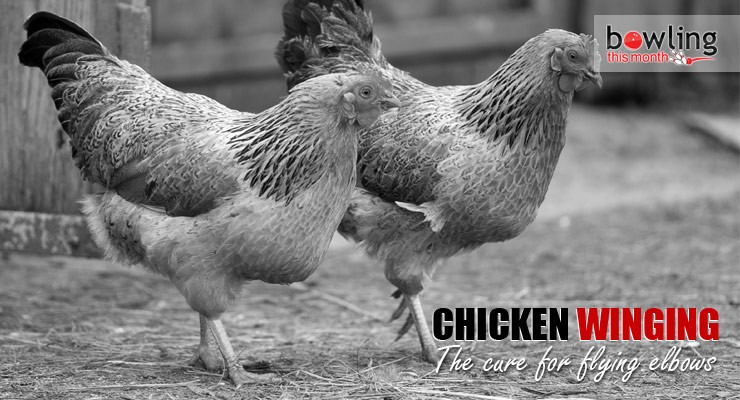In the last issue, I stressed the importance of a low and long follow through, propelled by a ball-weighted swing. Unfortunately, many bowlers lack the confidence to perform in this manner and muscle the downswing, an error which usually results in “chicken winging” and pulling the follow through.
One of the most frequent questions I am asked is, “How do I correct chicken winging?” Of course, I’m not referring to the popular “chicken wings”, a specialty among Americans who revel in finger foods and buffets. Chicken winging in the world of bowling is an erroneous method of delivery.
The oft-repeated phrase, chicken winging, derived its label by virtue of its close proximity to the actual configuration of a chicken wing. The arm is V-shaped; the top of the backswing descends into the forward swing and follow through with the elbow OUTSIDE the wrist and hand. (Diagrams 1 and 2)
Remember, in a quality delivery, the position of the arm/hand must be UNDER the shoulder (Diagram 3). Any delivery away from this position will severely impair ideal leverage in the shot. A release UNDER the shoulder is the point of maximum leverage. If the elbow doesn’t remain under the shoulder, chicken winging will rear its ugly head, causing the elbow to veer away from a straight forward swing.
This is a very common flaw among average bowlers and occasionally among top PBA players. In many cases, it is the result of a lack of confidence. This occurs when a bowler inadvertently forces the forward swing in an attempt to apply extra revolutions to the ball instead of relying on a swing that is gravitationally driven via a free fall.
This can be traced to the lack of confidence in the bowler’s mental preparation. For example, in an ideal release, the slide step must arrive at the foul line with the elbow close into the body prior to the release of the ball. You must also be in a position to ‘wait’ for the ball in order to muster maximum power in the delivery. At this juncture, there is a fine line ...
Already a premium member? Click here to log in.


